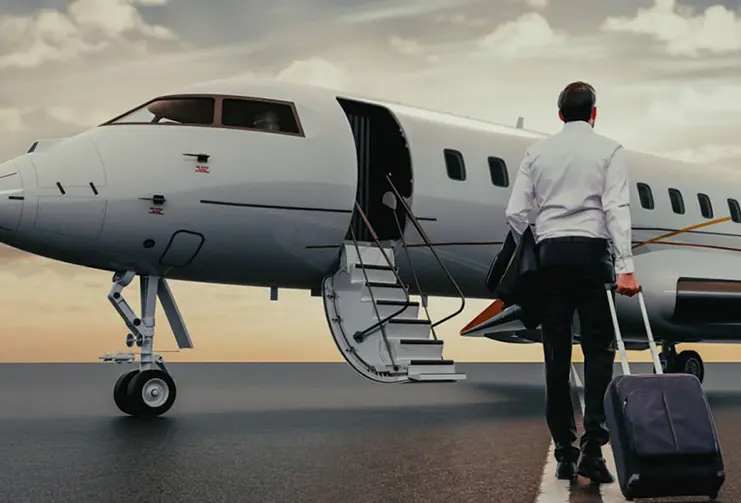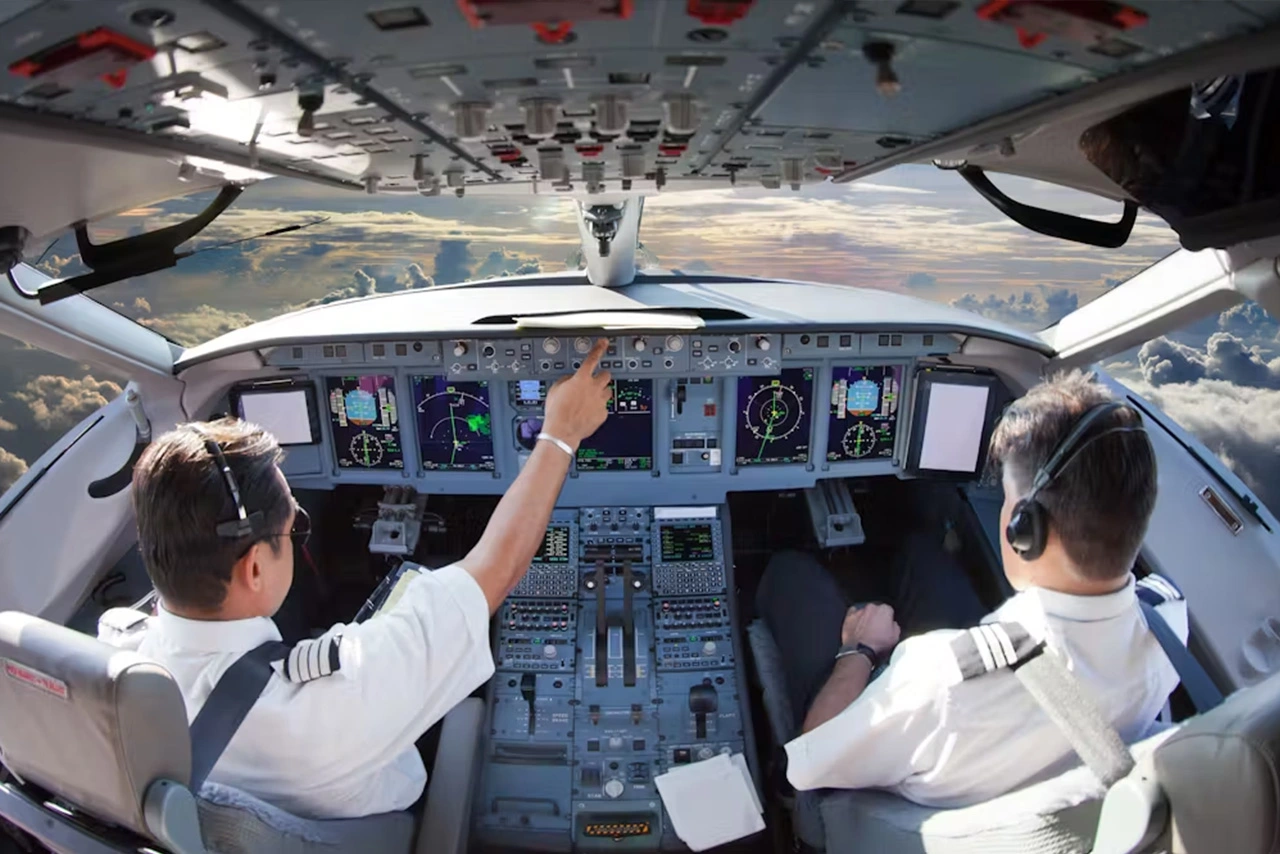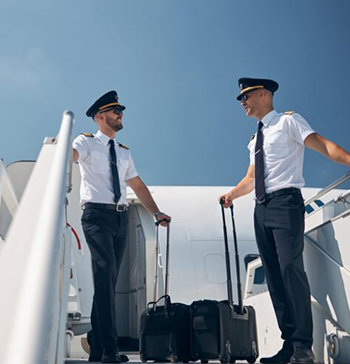
Airline Transport Pilot License (ATPL)

Take the Helm: Your Guide to Earning an Airline Transport Pilot License (ATPL) in the Philippines
Rising above the clouds, commanding a multi-crew airliner, and navigating vast distances with expert precision – these are the hallmarks of an Airline Transport Pilot (ATP). If leading a fulfilling career at the pinnacle of commercial aviation ignites your ambition, obtaining your ATPL in the Philippines could be the key to unlocking that dream.
Unveiling the Power of an ATPL:
This coveted license empowers you to:
- Command multi-crew aircraft: Lead a team of pilots while ensuring passenger safety and efficient operations.
- Fly internationally: Explore the world and expand your career to various airlines and destinations.
- Hold positions of high responsibility: Take on roles like Captain, First Officer, or Chief Pilot.
- Experience unparalleled professional growth: Advance your career and earn a rewarding income.
Charting Your Ascent: Embarking on ATPL Training:
The journey to your ATPL demands dedication, advanced training, and adherence to stringent regulations:
- Advanced Ground School: Delve deeper into complex aeronautical subjects like air transport economics, human factors in aviation, and multi-crew cooperation.
- Multi-crew Coordination (MCC) Training: Master teamwork and leadership skills essential for operating on a multi-crew flight deck.
- Airline-Specific Type Rating: Train and qualify to fly specific aircraft models demanded by the airline you intend to join.
- Extensive Flight Training: Accumulate significant flight time under rigorous training and experience the nuances of multi-crew operations.
- Examinations: Showcase your acquired knowledge and flying proficiency through written, oral, and simulator assessments conducted by the Civil Aviation Authority of the Philippines (CAAP).
Taking the First Step: Prerequisite Checks:
Before embarking on this challenging yet rewarding journey, ensure you meet the following criteria:
- Hold a valid Commercial Pilot License (CPL): This serves as the foundation for your ATPL training.
- Age: Be at least 23 years old.
- Medical Fitness: Maintain a valid Class 1 Medical Certificate from a CAAP-approved Aviation Medical Examiner.
- Minimum Flight Time: Possess at least 1,500 hours of total flying experience, with specific requirements for multi-engine and instrument flight time.
- English Proficiency: Demonstrate exceptional English communication skills, crucial for international operations and multi-crew coordination.
Demystifying the Journey: Exploring the CAAP Training Syllabus:
The CAAP outlines a structured syllabus for ATPL training, ensuring consistent development of advanced skills:
- Advanced Ground School: Covers subjects like air transport operations, human factors in aviation, multi-crew cooperation, and airline-specific regulations.
- Multi-crew Coordination (MCC) Training: Employs simulators and real-world scenarios to hone teamwork, leadership, and decision-making in a multi-crew environment.
- Airline-Specific Type Rating Training: Focuses on mastering the specific systems, procedures, and performance characteristics of chosen aircraft models.
- Extensive Flight Training: Includes significant flight time in multi-crew flight simulators and actual aircraft, solidifying practical skills and experience.
Breaking Down the Stages:
Your training typically unfolds in these phases:
- Advanced Ground School: Deepen your theoretical understanding of complex air transport operations and regulations.
- Multi-crew Coordination (MCC) Training: Develop critical teamwork and leadership skills for multi-crew environments.
- Airline-Specific Type Rating Training: Master the intricacies of your chosen aircraft model.
- Extensive Flight Training: Gain valuable experience in multi-crew scenarios under the guidance of experienced instructors.
- Examinations: Pass both the written and practical assessments conducted by CAAP-designated examiners.
- License Issuance: Upon successful completion of all requirements, proudly receive your coveted ATPL!
Investing in Your Future: Understanding the Costs:
The exact cost of obtaining your ATPL varies depending on several factors:
- Flight School: Different schools offer diverse program structures and pricing models.
- Airline-Specific Type Rating: The cost varies depending on the chosen aircraft model and training provider.
- Flight Simulation Hours: Simulators play a crucial role in ATPL training, and hourly rates impact the overall cost.
- Instructor Rates: Consider the instructor’s experience and hourly charges.
Do I Need to Pay Upfront?
Most flight schools offer flexible payment options to spread the cost throughout your training. Explore installment plans, scholarships, and potential financial aid to make your dream achievable.
Time Commitment: How Long Will It Take?
The duration of your ATPL training depends on your dedication, available time, and learning pace. On average, expect a minimum of 12-18 months, with dedicated individuals potentially completing it within a year. However, several factors can influence the timeframe:
- Prior Flight Experience: Those with extensive pre-existing multi-engine and instrument flight time might progress faster.
- Flight Simulator Availability: Simulator accessibility and scheduling can impact training speed.
- Airline-Specific Type Rating Training: The complexity of the chosen aircraft and training intensity can affect the duration.
- Personal Commitment: Your dedication to studying, practicing, and actively participating in training directly influences progress.
Estimating the Investment:
While exact costs fluctuate, consider this range for budgeting:
- Advanced Ground School: ₱20,000 – ₱30,000
- Multi-crew Coordination (MCC) Training: ₱75,000 – ₱100,000
- Airline-Specific Type Rating Training: ₱200,000 – ₱500,000 (depending on the chosen aircraft model)
- Extensive Flight Training: ₱300,000 – ₱500,000 (including simulator and aircraft rental fees)
- Examinations and Other Fees: ₱20,000 – ₱30,000
CAAP Requirements for Your ATPL:
Remember, obtaining your ATPL involves adhering to specific CAAP regulations:
- Maintain a valid Class 1 Medical Certificate.
- Meticulously document your flight training under instructor supervision.
- Meet the minimum flight time requirements: This includes total flight time, multi-engine flight time, instrument flight time, and specific experience requirements as outlined by CAAP.
- Pass both the written and practical examinations conducted by CAAP-designated examiners.
- Demonstrate exceptional English communication skills throughout training and assessments.
Beyond the Basics: ATPL Upgrades and Enhancements:
Your ATPL serves as a springboard for further specialization and career advancement:
- Instructor Rating (TRI): Train future generations of airline pilots and share your knowledge.
- Airline-Specific Endorsements: Expand your career options by qualifying to fly different aircraft models within your chosen airline.
- Leadership and Management Training: Develop advanced skills for supervisory roles within airlines.
Remember, the sky’s the limit! Earning your ATPL represents a significant milestone, opening doors to a distinguished career at the pinnacle of aviation. Embrace the continuous learning journey, challenge yourself with further specializations, and explore the incredible opportunities this license unlocks.
Ready to Take Off?
If leading a team of pilots, soaring across continents, and experiencing the unparalleled satisfaction of commanding an airliner stir your ambition, take the first step! Research reputable flight schools in the Philippines, compare their programs and costs, and schedule introductory flights to experience the magic firsthand. With dedication, passion, and the right guidance, you can transform your dream of becoming an Airline Transport Pilot into a reality that takes flight.
Additional Resources:
- Civil Aviation Authority of the Philippines (CAAP): https://caap.gov.ph/
- Aircraft Owners and Pilots Association (AOPA) Philippines: https://www.philstar.com/tags/aircraft-owners-and-pilots-association-philippines
- List of Accredited Flight Schools in the Philippines: https://caap.gov.ph/wp-content/uploads/2023/10/List-of-Pilot-Maintenance-Schools-As-of-Sept.-1-2023.pdf
Start your journey today and let the vast blue yonder welcome you with open arms!

Frequently asked questions
What is the airline transport pilot certificate?
The Airline Transport Pilot Certificate (ATPL) is the highest level of pilot certification recognized internationally. Holding an ATPL allows pilots to operate as captain or first officer on large commercial aircraft. It signifies that the pilot has undergone rigorous training and has demonstrated proficiency in flying complex, multi-engine airplanes under various conditions. ATPL holders are entrusted with the responsibility of safely transporting passengers and cargo on scheduled flights.
How do you become a airline transport pilot in the Philippines?
The Airline Transport Pilot Certificate (ATPL) is the highest level of pilot certification recognized internationally. Holding an ATPL allows pilots to operate as captain or first officer on large commercial aircraft. It signifies that the pilot has undergone rigorous training and has demonstrated proficiency in flying complex, multi-engine airplanes under various conditions. ATPL holders are entrusted with the responsibility of safely transporting passengers and cargo on scheduled flights.
How much does ATPL cost us in the Philippines?
The cost of obtaining an ATPL in the Philippines can vary significantly depending on factors such as the flight school chosen, the type of aircraft used for training, additional ratings pursued, and individual learning pace. Generally, completing the necessary training, flight hours, examinations, and associated expenses can amount to a substantial investment, often tens of thousands of dollars.
What is the difference between CPL and ATPL?
The main difference between a Commercial Pilot License (CPL) and an Airline Transport Pilot License (ATPL) lies in the privileges and qualifications they confer. A CPL allows pilots to operate as paid pilots for hire, typically on smaller aircraft or as co-pilots on larger commercial planes. On the other hand, an ATPL authorizes pilots to act as captains or first officers on multi-crew, multi-engine aircraft, including commercial airliners.
Is ATPL much harder than PPL?
Whether an ATPL is much harder than a Private Pilot License (PPL) depends on various factors, including individual aptitude, dedication, and previous aviation experience. Generally, obtaining an ATPL requires a significant commitment of time, effort, and financial resources compared to a PPL. The training curriculum for an ATPL is more extensive and covers advanced topics such as airline operations, flight management, and crew resource management.
What is the strongest pilot license?
The strongest pilot license is subjective and depends on individual career goals and aspirations. However, in terms of the highest level of certification and the broadest scope of privileges, the Airline Transport Pilot License (ATPL) holds the most prestige. ATPL holders are qualified to operate as captains or first officers on large commercial aircraft, commanding complex operations and flying routes worldwide.
Is ATPL better than CPL?
Whether an ATPL is better than a CPL depends on individual career objectives and the specific roles pilots aim to pursue. For those aspiring to work for major airlines and command large commercial aircraft, an ATPL is typically considered essential. It provides the highest level of certification and qualifies pilots for leadership positions in the aviation industry. However, if one’s career goals involve flying smaller aircraft or working in other sectors of aviation, a CPL may suffice. Ultimately, the decision between ATPL and CPL depends on factors such as career aspirations, personal preferences, and available opportunities.
Free Career Guide

Want to find out more about our pilot courses?
Download our free eBook to learn all about pilot training in the Philippines, including the qualifications needed, the training process, available courses, and career opportunities. Find out how you can take the first step toward a rewarding career in aviation.






